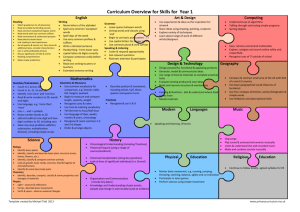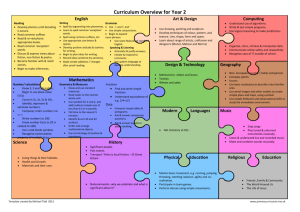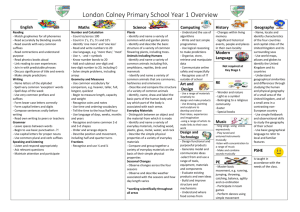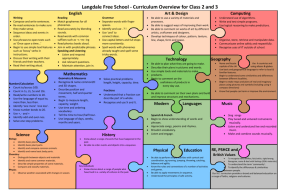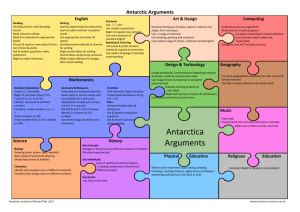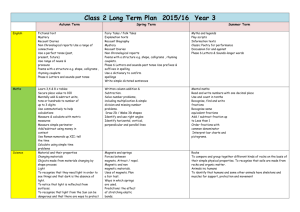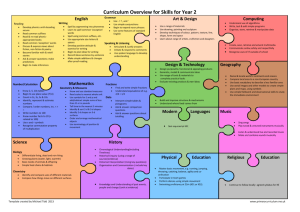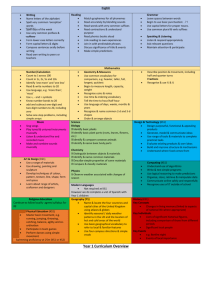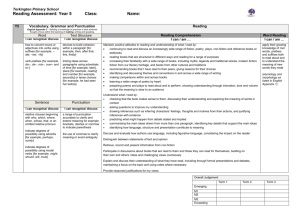Y1 Spring 2 Cycle 2 -Castles - Rivacre Valley Primary School
advertisement
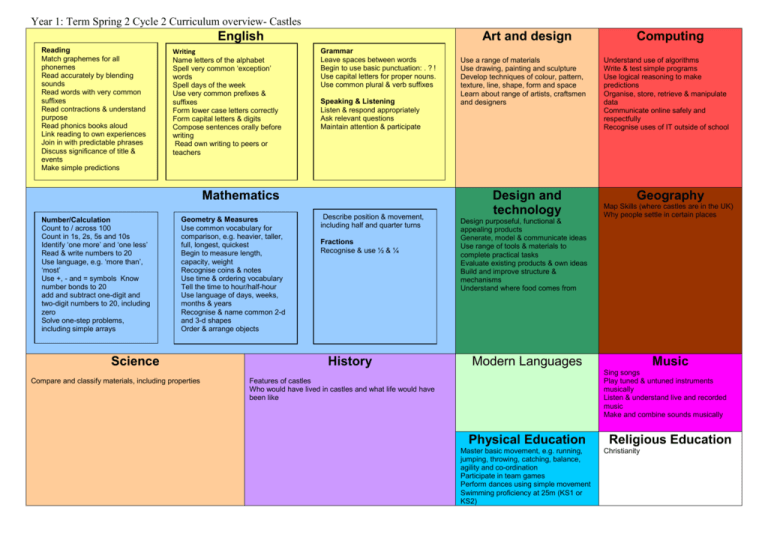
Year 1: Term Spring 2 Cycle 2 Curriculum overview- Castles English Reading Match graphemes for all phonemes Read accurately by blending sounds Read words with very common suffixes Read contractions & understand purpose Read phonics books aloud Link reading to own experiences Join in with predictable phrases Discuss significance of title & events Make simple predictions Writing Name letters of the alphabet Spell very common ‘exception’ words Spell days of the week Use very common prefixes & suffixes Form lower case letters correctly Form capital letters & digits Compose sentences orally before writing Read own writing to peers or teachers Art and design Grammar Leave spaces between words Begin to use basic punctuation: . ? ! Use capital letters for proper nouns. Use common plural & verb suffixes Speaking & Listening Listen & respond appropriately Ask relevant questions Maintain attention & participate Mathematics Number/Calculation Count to / across 100 Count in 1s, 2s, 5s and 10s Identify ‘one more’ and ‘one less’ Read & write numbers to 20 Use language, e.g. ‘more than’, ‘most’ Use +, - and = symbols Know number bonds to 20 add and subtract one-digit and two-digit numbers to 20, including zero Solve one-step problems, including simple arrays Geometry & Measures Use common vocabulary for comparison, e.g. heavier, taller, full, longest, quickest Begin to measure length, capacity, weight Recognise coins & notes Use time & ordering vocabulary Tell the time to hour/half-hour Use language of days, weeks, months & years Recognise & name common 2-d and 3-d shapes Order & arrange objects Science Compare and classify materials, including properties Describe position & movement, including half and quarter turns Fractions Recognise & use ½ & ¼ History Use a range of materials Use drawing, painting and sculpture Develop techniques of colour, pattern, texture, line, shape, form and space Learn about range of artists, craftsmen and designers Design and technology Design purposeful, functional & appealing products Generate, model & communicate ideas Use range of tools & materials to complete practical tasks Evaluate existing products & own ideas Build and improve structure & mechanisms Understand where food comes from Computing Understand use of algorithms Write & test simple programs Use logical reasoning to make predictions Organise, store, retrieve & manipulate data Communicate online safely and respectfully Recognise uses of IT outside of school Geography Map Skills (where castles are in the UK) Why people settle in certain places Modern Languages Music Sing songs Play tuned & untuned instruments musically Listen & understand live and recorded music Make and combine sounds musically Features of castles Who would have lived in castles and what life would have been like Physical Education Master basic movement, e.g. running, jumping, throwing, catching, balance, agility and co-ordination Participate in team games Perform dances using simple movement Swimming proficiency at 25m (KS1 or KS2) Religious Education Christianity
